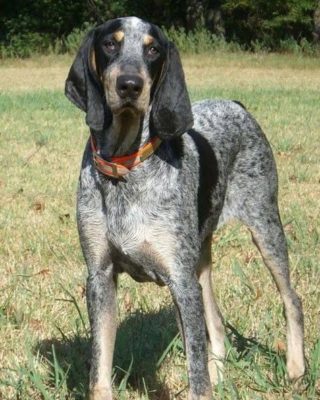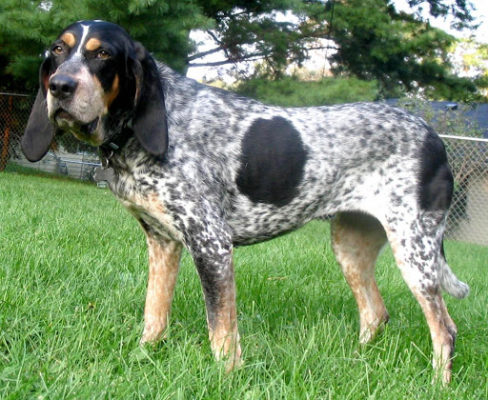Grand Bleu de Gascogne
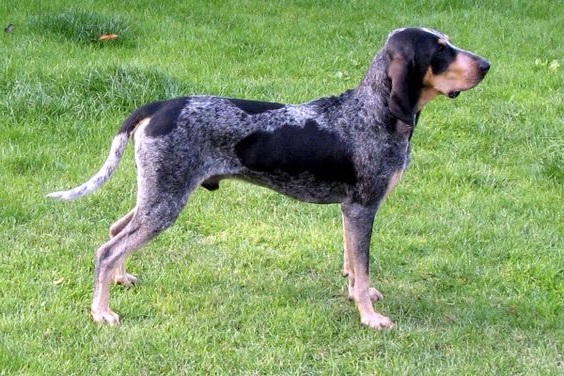
The Grand Bleu de Gascogne dog is a gentle giant. Although they may keep aloof with strangers, their natural friendliness comes to the fore once they feel comfortable. It is important to note that Grand Bleu de Gascogne is still primarily kept as hunting dogs, and their temperament may depend on the amount of training they receive. Since they were not bred for domestic use, their ability to adjust to family life will depend on experienced owners willing to devote enough time to exercise and train their pets.
Table of Contents
Breed Information
| Another Name | – |
| Origin | France |
| Height | Males 65-72 cm Females 62-68 cm |
| Weight | Males 35-39 kg Females 30-35 kg |
| Fur | Tight, short, stiff |
| Color | Mottled black and white |
| Lifespan | 10-13 years |
| FCI Classification | Scent hounds and related breeds |
| Group | Dogs for hunting |
| Price | From $1000 |
Breed Photos
Origin History
The Grand Bleu de Gascogne is one of many European breeds whose roots are derived from dogs distributed throughout the continent by Phoenician traders. The earliest mention of the breed dates back to fourteenth-century France. For centuries, the Grand Bleu de Gascogne served as a pack hunting dog. The nobles of medieval Europe kept pack hounds to hunt big game such as deer, wolves, and wild boar. Owners of such dogs took advantage of their superior sense of smell and endurance.
This breed also has a relatively long history in the United States. Indeed, it is now believed that there are more Grand Bleu de Gascogne in the United States than in their native France. The first Grand Bleu de Gascogne crossed the border in the eighteenth century. General Lafayette, a French nobleman who fought with the Americans in the War of Independence, gave George Washington seven Grand Bleu de Gascogne in 1785. The general remarked that their voices were so musical that they reminded him of Moscow bells.
The numbers of the breed began to dwindle over time. They were expensive dogs, and many nobles started to switch to other breeds to reduce their expenses. The breed received a further blow during and after the French Revolution when many French nobles were expelled from their estates. In modern France, the Grand Bleu de Gascogne is a rare breed.
Appearance
The Grand Bleu de Gascogne is a medium-sized dog, between 65 and 72 cm tall and weighing between 35 and 39 kg. They are instantly recognizable as hunting sniffer dogs because of their long ears that hang down to the base of the neck. This breed’s muzzles have a square appearance due to the jaws, although this trait is less pronounced than in some other snapper breeds. The Grand Bleu de Gascogne has a muscular, slender body with long legs. They have a deep chest.
The coat of this breed is a complex of three different colors. Their main color is white with spots of black, which gives them a marbled appearance. On top of this background are larger black spots on the chest and belly. The head is black on the sides with a white-spotted band in the center. Brown fur also covers their limbs toward the paws and part of the chest. They also have brown eyebrows, which is another distinguishing feature.
Character
The Grand Bleu de Gascogne dog is a gentle giant. Although they may keep aloof with strangers, their natural friendliness comes to the fore once they feel comfortable. It is important to note that Grand Bleu de Gascogne is still primarily kept as hunting dogs, and their temperament may depend on the amount of training they receive. Since they were not bred for domestic use, their ability to adjust to family life will depend on experienced owners willing to devote enough time to exercise and train their pets. Nevertheless, they are not aggressive dogs.
Also, they are very sociable and like to accompany someone. A lone Grand Bleu de Gascogne will be noisy; the dog’s constant barking can tire out close neighbors. They are best suited to the countryside, where they can accompany their owners in their daily activities and enjoy physical activity.
Care
Grand Bleu de Gascogne’s short coat does not require any special care. Weekly brushing should be enough to keep their coats tidy. They may require more regular brushing during the seasonal molt in the spring and fall. Their ears should be checked regularly for wax buildup and early signs of infection.
Training
Grand Bleu de Gascogne is intelligent dogs, but that doesn’t make them easy to train. They are independent dogs with their ideas of what they need to do. Once they catch a scent, they become so focused that they are difficult to distract. Training is necessary for this breed to keep them under control. Time and patience are the keys to a successful practice.
They are sensitive animals, so that a gentle correction will lead to better results than a rough approach. Socialization is an important aspect of Grand Bleu de Gascogne training. Introducing them to as many people, dogs, and environments as possible will help the Grand Bleu de Gascogne dogs become confident adults.
Common Diseases
The Grand Bleu de Gascogne dogs are generally healthy. Their average lifespan is 10 to 12 years. The problem is the size and deep chest, which predisposes them to gastrointestinal diseases, namely stomach congestion.
Nutrition
As large breed dogs, the Grand Bleu de Gascogne should be fed a high-quality dry food formulated for adult large breed dogs. Since the breed was bred for hunting, it can excel at the formula for an active or working breed. But be careful about overfeeding to prevent obesity.
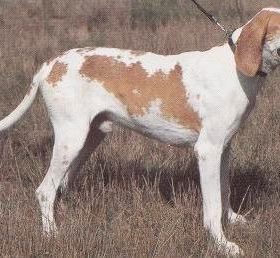 Chien Français Blanc et Orange
Chien Français Blanc et Orange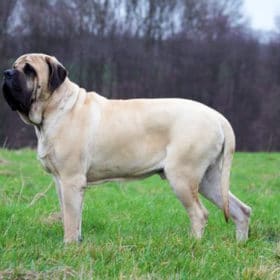 English Mastiff
English Mastiff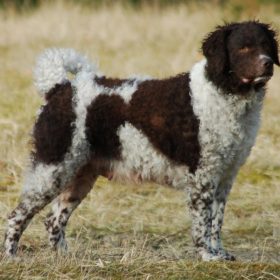 Wetterhoun
Wetterhoun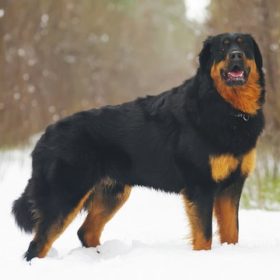 Buryat-Mongolian Wolfhound
Buryat-Mongolian Wolfhound Lapponian Herder
Lapponian Herder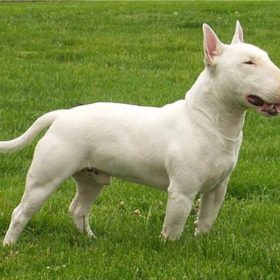 Bull Terrier
Bull Terrier